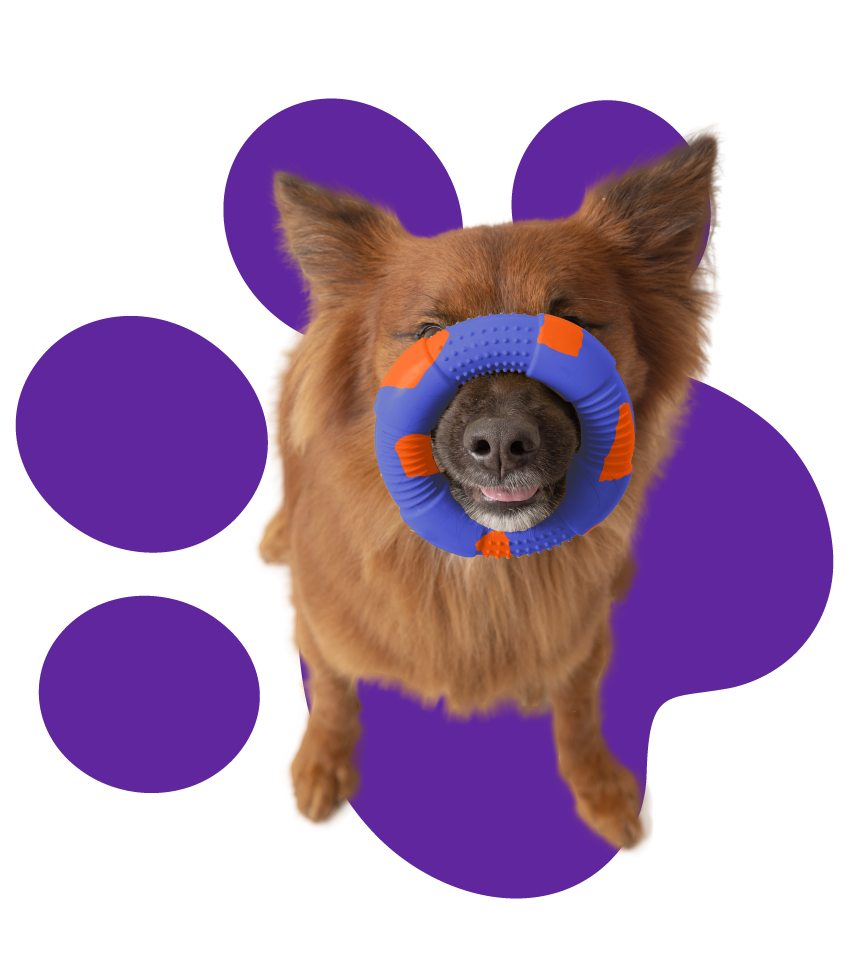Tips for playing with your pet


Play and toys are essential for the physical and emotional development of pets. Plus, it's a practice that can and should be present throughout a dog's life, adjusting to the animal's needs at each stage. However, for many pet owners, engaging with their pets to play can be stressful. We may encounter overly excited dogs that we struggle to control, or disinterested dogs that won't even look at us.
Many believe that playing with your dog is simply taking them to the park any day and throwing a frisbee or ball, expecting your pet to happily chase and bring the toy back without resistance, like a scene from a Hollywood movie. But the reality is, if we don't introduce our furry friends to play and toys from puppyhood, it's harder to achieve that connection and the beneficial, enjoyable practice we all hope to have.
Playing frequently with your pet and using good toys will always be our best ally. That's why we want to share some important tips you should keep in mind during your playtime with your dog:
Avoid overexcitement
Don't let your pet start the play session by barking or grabbing the toy intensely. By "rewarding" these behaviors with playtime, you unintentionally reinforce undesirable attitudes in your canine friend, which may become more frequent over time.
Announce the beginning and end of Play
Always start and end all games with an auditory and visual command. For example, energetically say the command "play" while showing your pet a thumbs-up gesture at the start of the interaction, and use the command "finished" by waving your hands open from side to side to indicate that playtime has concluded.
Encourage playing with other furry friends
While it's important for your pet to spend time playing with you and other humans, playtime isn't exclusively a human-pet activity. In fact, for your dog to become more sociable and learn to share attention and space with other dogs, it's important to create opportunities for them to play with other animals. This helps them develop social skills and strategies.
Don't use abandonment as punishment
Setting boundaries is important for your pet's development, and so is disregarding inappropriate behaviors. However, abandoning play as a punishment for bad behavior can be counterproductive. This practice might lead your dog to ignore you or lose interest in playing altogether.
Humans aren’t toys
Under no circumstances should we allow the dog to play with any part of our body. Keep in mind that, even if it doesn't bother you and you might find it cute or amusing when your dog plays with your hands, feet, hair, or any other part, the animal will generalize this behavior and will likely try it with other people or in other contexts. This behavior is not always well-received by strangers.
Benefits of different types of play
Each type of play has its benefits and develops various behaviors. Tug-of-war with ropes stimulates our pets' prey drive, while playing fetch with a ball stimulates their hunting instinct. It's important during tug-of-war that your dog can release the toy when asked. Otherwise, it's best to start using an auditory command like "drop" to make the game more enjoyable and controlled.
Playing with your dog not only strengthens the bond between you both but also promotes their physical and emotional development. Put these tips into practice and enjoy unique moments with your furry friend.










